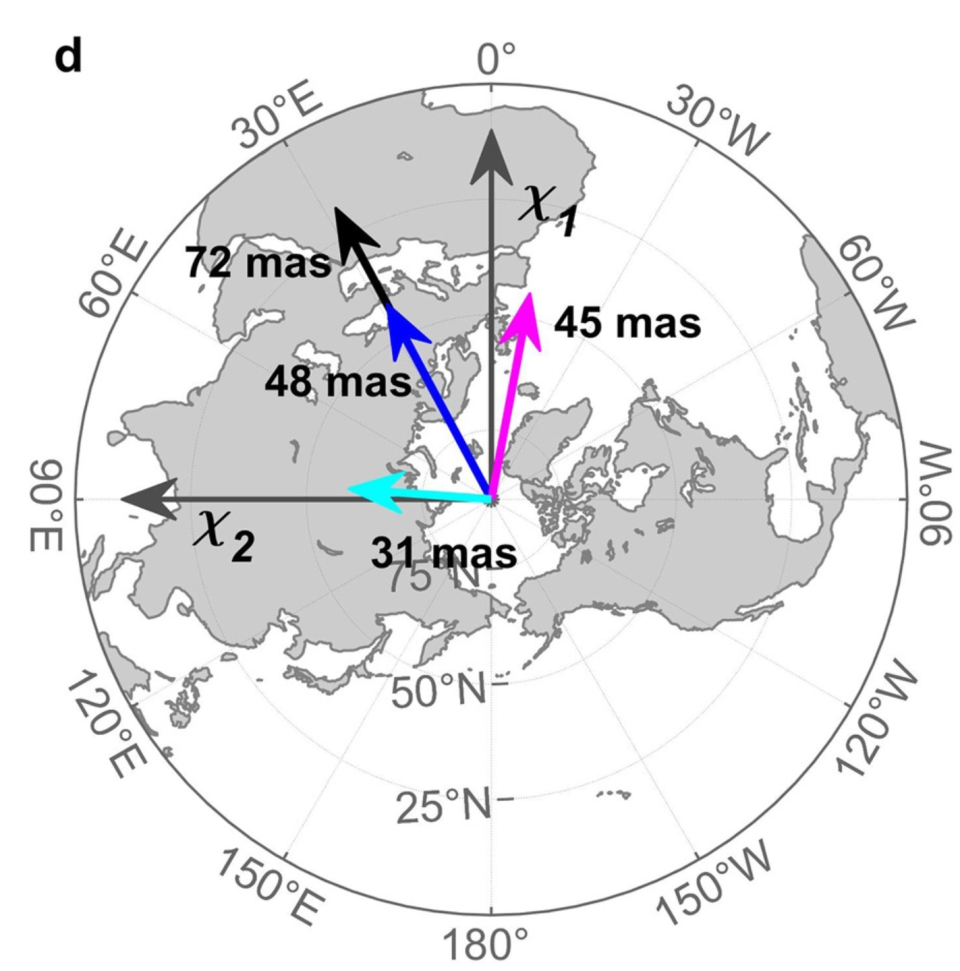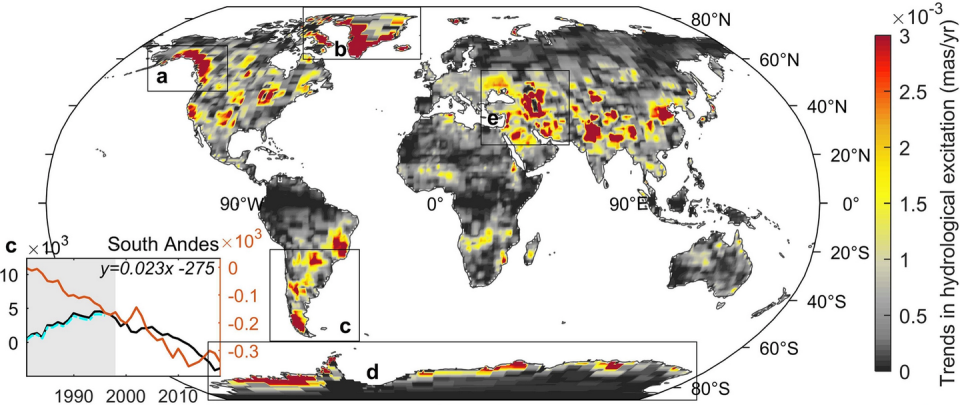Earth's Axis Has Secretly Shifted
Earth’s axis has shifted due to climate change.
Melting glaciers and overuse of groundwater account for much of the change.
Regions like Alaska and the Himalayas have experienced the most glacial melting.
Whoops, we accidentally made the planet move: New research says human-caused climate change has accelerated the rate at which Earth’s rotational axis changes.
➡ You think science is badass. So do we. Let’s nerd out over it together.
Earth has two kinds of poles. The north and south magnetic poles, which affect things like navigation, drift and even switch places back and forth over time. Earth’s other kind of pole is the axis around which the planet physically spins. This axis has also slightly shifted over time, but scientists haven’t been able to exactly figure out why.
To get to the bottom of it, researchers from the Institute of Geographic Sciences and Natural Resources Research in China and the Technical University of Denmark pulled satellite data from NASA’s Gravity Recovery and Climate Experiment (GRACE) spacecraft and studied this “true polar wander” phenomenon during a specific period of time in the 1990s.
The scientists found moving masses of water have pushed Earth’s axis eastward beyond even what existing climate models predicted. On the surface, this makes sense: Think about holding a basin of water and then moving it back and forth—the sloshing causes the water’s weight to move all around. This is what’s happening on a macro level.
But the surprising part is that humans made it happen. The scientists took the climate model that fits data from the 2000s and 2010s and back-calculated it through to the ’90s to see if the results matched up. The only way the data matches is if there’s some kind of “X-factor” happening.

That X-factor is called terrestrial water shortage (TWS), which includes changes in Earth’s water levels from glacial melting and other anthropogenic activities, like overuse of the groundwater supply from aquifers. The study, which appears in Geophysical Research Letters, says TWS caused Earth to shift a little to the east in the 1990s—basically, the planet’s full basin sloshed around and created a new center of gravity.
Now, some amount of the TWS change has naturally occurred without humans. But the scientists found a strong correlation in areas where glacial melt and groundwater depletion has happened most: “Most areas, such as Alaska, Greenland, the Southern Andes, Antarctica, the Caucasus, and the Middle East, have recently exhibited significant glacier mass changes,” the scientists explain in their paper.

These regions, and glacial and groundwater questions more broadly, don’t explain the entire disparity that scientists found between the expected values and the real values. Global water movement and storage varies by factors like regional climate patterns, they say. But overall, the mathematical analysis supports climate change factors contributing most to the change.
So, where does this leave us? Well, the polar shift is very small in the grand scheme of things, and humans won’t be able to notice it. But to make this change in such a short time indicates our near future might have bigger changes in store—ones that could make our heads spin.
🎥 Now Watch This:
You Might Also Like

